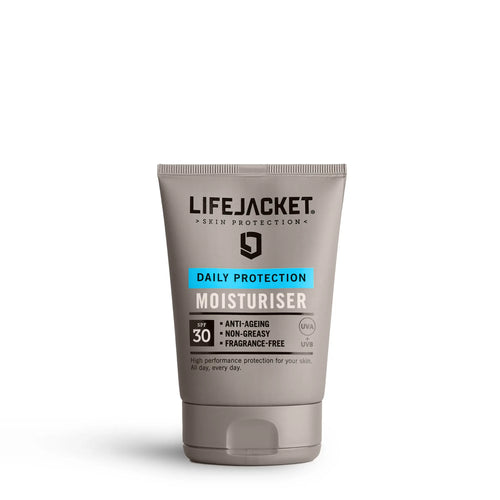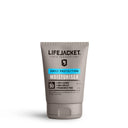Introduction
Winter's here and as we've said in recent weeks, that can give rise to dry-feeling, flaky, itchy or dull skin.
While these symptoms can occur throughout the year, they may become aggravated during colder months. This quick explainer will help tell you if the cause is dehydrated vs. dry skin, what that means and how to treat it.
While there's commonality in the symptoms and, to a certain extent, the treatment, it's worth trying to identify whether you have (a) dry, (b) dehydrated or (c) dry AND dehydrated skin, so you know what lifestyle changes to make (assuming you want to address the problem in the first place!).
Understanding Dry Skin
The way we think of this is that dry skin is a description of your skin 'type'. It's inherent rather than something you wake up with one day and experience for a couple of days. The opposite of dry skin is oily skin and 'normal' skin is somewhere in between.
We often use the brick wall analogy when describing skin: like bricks held together with mortar, skin cells are surrounded by a natural oil, called sebum. Dry skin means your skin isn't producing enough oil and, crudely, bricks become loose. This is gene, diet and weather dependent. But, largely, it's down to genetics and age (since skin becomes drier with age).
So, if you have dry skin, it tends to stay with you unless you try really hard to compensate through diet and skincare.
Understanding Dehydrated Skin
Dehydrated skin is less permanent and more of a temporary 'condition'. It can happen to anybody and simply means there isn't enough water in your skin.
Healthy skin contains about 30% water, which is essential for maintaining the skin’s elasticity, strength and structure. If that drops even slightly, it can lead to dehydrated skin.
In simple terms, too much water (from inside you) is evaporating off the surface of your skin. This is a natural, daily process known as Transepidermal Water Loss but if the body can't adequately slow or control that process, it can lead to dehydrated skin.
The reason this might happen is often because of a weak or damaged skin barrier likely caused by oil-stripping cleansers, harsh skin-stripping exfoliators, sun exposure, harsh weather or changes in temperature (going from warm central heating indoors to ice cold wind outdoors).
For the active members of our community, another possible reason can be excessive sweating where water loss isn't being replaced through water consumption. On average, we lose 300-500ml of water from our skin each day, at rest in a cool environment, but this can increase to 10 litres (!) while exercising in the heat.
Diagnosing your skin first
So, let's start by establishing whether you have dry, normal or oily skin.
You probably already have a good feel for this but oily skin is characterised by the following:
- Large pores
- A visible sheen across your forehead, nose and chin on a daily-ish basis
- Prone to acne and breakouts
Dry skin is characterised by the following:
- Small pores
- No visible sheen
- Creams absorb into the skin easily almost vanishing instantly
- Susceptible to rough/itchy/flakey patches or cracking
Next question...is your skin dehydrated?
Does it feel soft and plump or tight?
So, which do you have?
Dry skin - you don't feel like you have tight skin that makes you want to screw your face up but you do experience rough/itchy/flakey patches or cracking.
Dehydrated skin - You have tight skin that makes you want to screw your face up.
Dry AND dehydrated skin - you have tight skin that makes you want to screw your face up AND you experience rough/itchy/flakey patches or cracking. This isn't so unusual because people with dry skin can be more prone to dehydrated skin.
How to fight back?
We talked about the different types of moisturisers and how they work here but in a nutshell, your fightback response will need regular use of a good moisturiser.
In simple terms, you need to put oil and/or water back into the skin. You can also help reduce water loss through the skin barrier by locking it in. These are both things that moisturisers can help with.
For dry skin where the skin lacks oil, use a moisturiser that puts oil back into the skin. Heavier, rich moisturisers will do that. This will be down to feel but here are some ingredients to look out for on the back label: anything with the word 'wax' or 'butter' in it, glycerin and lanolin. These will seal in water while other ingredients in the product soak into the skin and keep it supple.
For dehydrated skin where water loss is the issue, use a moisturiser that sits on the surface of the skin and draws moisture into the skin and which clings onto water. Typically, these are less oily/heavy in feel. Look on the ingredients label for glycerin, urea, sorbitol and hyaluronic acid.
Other steps for both include: use gentle non-soap cleansers like our Face Cleansing Bar and Body Wash Bar, don't scrub or exfoliate with physical products, don't have long/hot showers and apply moisturiser onto damp skin to lock in the moisture.
Conclusion
Understanding the difference between dehydrated and dry skin is helpful for providing the right care, especially during the winter months. By identifying the specific needs of your skin, you can customise your approach to combat the effects of recent cold weather, rain, and harsh winds. We really hope this helps!






